 As a mom of three boys, a teacher to many students, and an educator of educators, I am constantly battling questions about students’ reading levels. Teachers also frequently ask questions like how many times students should read the same book, and if it matters what students are reading (magazines, graphic novels, etc.). Truthfully, I haven’t seen any research that proves a reader will only improve if reading above their reading level. The research I have seen says that if children read, they will improve. As educators, we should encourage wide reading. We should entice students with other genres, authors, and books, but let them return to an old favorite now and then. And rereading books is okay. At least I hope so! I reread Charlie and the Chocolate Factory EVERY year. It will always be my favorite.
As a mom of three boys, a teacher to many students, and an educator of educators, I am constantly battling questions about students’ reading levels. Teachers also frequently ask questions like how many times students should read the same book, and if it matters what students are reading (magazines, graphic novels, etc.). Truthfully, I haven’t seen any research that proves a reader will only improve if reading above their reading level. The research I have seen says that if children read, they will improve. As educators, we should encourage wide reading. We should entice students with other genres, authors, and books, but let them return to an old favorite now and then. And rereading books is okay. At least I hope so! I reread Charlie and the Chocolate Factory EVERY year. It will always be my favorite.
My middle son, Cole, loves to read fiction. About two years ago he became hooked on the Diary of a Wimpy Kid and Big Nate series. Yes, these are hybrid texts of fiction and graphic novel. Even though his dad was horrified that he 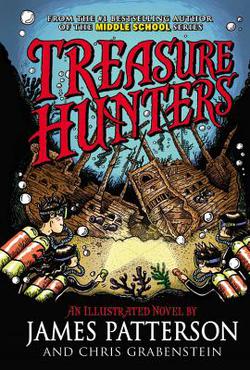 spent hours reading “comics,” I was excited that he showed an interest in reading and dedicated time to reading instead playing with electronics or watching television. I began discussing some other books with him that he might also like to read. At first he wasn’t having it, but I convinced him to try and read Treasure Hunters by James Patterson (the same James Patterson that writes for adults). He has published many kids books, including the Middle School Series and I Funny books. Treasure Hunters is an adventure story of two siblings who help their parents dive and search for treasure below the sea, but they are soon sent on their own adventure to find their missing parents using cryptic clues. The book itself is quite thick, but included many pictures throughout that mimic the layout of Diary of a Wimpy Kid. Cole wasn’t sure at first, since he tends to gravitate towards funny books and not necessarily mysteries, but like a strong educator, I began trying to push him out of his comfort zone and into another genre. He was immediately sucked in to this story. He was spending hours in his room reading and then yelling at me from the other room about what was happening. He thoroughly enjoyed this story. Since he enjoyed this book, we went to the library and checked out the I Funny books and Middle School series as well. Cole enjoyed all of James Patterson’s books and began sharing these stories with his friends at school.
spent hours reading “comics,” I was excited that he showed an interest in reading and dedicated time to reading instead playing with electronics or watching television. I began discussing some other books with him that he might also like to read. At first he wasn’t having it, but I convinced him to try and read Treasure Hunters by James Patterson (the same James Patterson that writes for adults). He has published many kids books, including the Middle School Series and I Funny books. Treasure Hunters is an adventure story of two siblings who help their parents dive and search for treasure below the sea, but they are soon sent on their own adventure to find their missing parents using cryptic clues. The book itself is quite thick, but included many pictures throughout that mimic the layout of Diary of a Wimpy Kid. Cole wasn’t sure at first, since he tends to gravitate towards funny books and not necessarily mysteries, but like a strong educator, I began trying to push him out of his comfort zone and into another genre. He was immediately sucked in to this story. He was spending hours in his room reading and then yelling at me from the other room about what was happening. He thoroughly enjoyed this story. Since he enjoyed this book, we went to the library and checked out the I Funny books and Middle School series as well. Cole enjoyed all of James Patterson’s books and began sharing these stories with his friends at school.
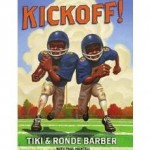 My older son Jack, tends to prefer to read nonfiction. He can spend hours researching stats and figures of sports stars. Not only does he spend time learning this information, he can retain and use the information later. Perhaps a future sportscaster? Even though I know that this is what he likes to read, I felt the need to gently push him towards another genre. I found a series of football books written by Tiki and Ronde Barber, the ex-pro football players. Jack seemed intrigued that he knew information about the Barber brothers and they had actually written a book. I didn’t tell him they had written many and I was going to slowly bring them ALL home! Baby steps! He began reading this series and he loved it. But, ALAS, we ran out of books by Tiki and Ronde Barber. I had to find something similar that would be keep his interest. We tried other sports fiction, but couldn’t find the type of reading he enjoyed. I turned to one of our beloved children’s book authors, Jon Scieszka (the author of The True Story of the Three Little Pigs and The Stinky Cheese Man). Jon
My older son Jack, tends to prefer to read nonfiction. He can spend hours researching stats and figures of sports stars. Not only does he spend time learning this information, he can retain and use the information later. Perhaps a future sportscaster? Even though I know that this is what he likes to read, I felt the need to gently push him towards another genre. I found a series of football books written by Tiki and Ronde Barber, the ex-pro football players. Jack seemed intrigued that he knew information about the Barber brothers and they had actually written a book. I didn’t tell him they had written many and I was going to slowly bring them ALL home! Baby steps! He began reading this series and he loved it. But, ALAS, we ran out of books by Tiki and Ronde Barber. I had to find something similar that would be keep his interest. We tried other sports fiction, but couldn’t find the type of reading he enjoyed. I turned to one of our beloved children’s book authors, Jon Scieszka (the author of The True Story of the Three Little Pigs and The Stinky Cheese Man). Jon 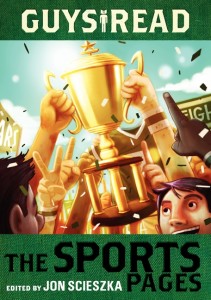 Scieszka has a series called Guys Read. There are three in the series, Funny Business, Thriller, and The Sports Pages. Within each book are many short stories on the topic written by popular kid authors. I bought The Sports Pages and HAD IT SIGNED at the Austin Book Festival. Some of the authors are Dan Gutman, Tim Green, Jacqueline Woodson, Chris Crutcher, and Gordon Korman. I know that these authors have many other books on their own and that could help Jack learn about more authors. As he read each story we discussed whether he enjoyed the writing and the story. When he did, we went to the library and book store to check out the author’s other books. From reading this, Jack found two other authors that he truly enjoyed reading and he branched out. My next move with him is to branch away from sports – is it possible?
Scieszka has a series called Guys Read. There are three in the series, Funny Business, Thriller, and The Sports Pages. Within each book are many short stories on the topic written by popular kid authors. I bought The Sports Pages and HAD IT SIGNED at the Austin Book Festival. Some of the authors are Dan Gutman, Tim Green, Jacqueline Woodson, Chris Crutcher, and Gordon Korman. I know that these authors have many other books on their own and that could help Jack learn about more authors. As he read each story we discussed whether he enjoyed the writing and the story. When he did, we went to the library and book store to check out the author’s other books. From reading this, Jack found two other authors that he truly enjoyed reading and he branched out. My next move with him is to branch away from sports – is it possible?
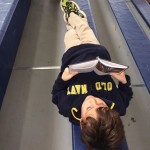 My youngest, Rhys, needs little encouragement. He enjoys a great story and he loves to learn new things. I find him reading all kinds of things all the time and truthfully ANYWHERE. Our biggest challenge with him is making sure the content he’s reading isn’t well beyond his years! He even blogged about one of his books on Literary Fusions as a guest blogger – Check it out!
My youngest, Rhys, needs little encouragement. He enjoys a great story and he loves to learn new things. I find him reading all kinds of things all the time and truthfully ANYWHERE. Our biggest challenge with him is making sure the content he’s reading isn’t well beyond his years! He even blogged about one of his books on Literary Fusions as a guest blogger – Check it out!
When I work with students in the classroom, it isn’t much different. Regardless of whether I am teaching elementary or middle school, I have a Readers’ Workshop set up. In this model, I will teach a mini-lesson for the first 10 – 20 minutes and then my students are expected to read their own books. Since, we are typically working on skills in a specific genre, students are expected to stay within the genre, but can choose any text. Without fail, there are always at least a few (sometimes more!) students who let you know they hate reading and won’t be joining in the “fun.” Even though inside this crushes me, I remain calm. Find their interests, either through conversation or interest inventories. Find books for them! Students who are reluctant to read won’t search things out on their own. I search through blogs of fellow teachers who discuss books (KidLit Frenzy, The Nerdy Book Club, The Next Best Book, and of course Literary Fusions), I check book lists (Lone Star Book List, Bluebonnet Book List, New York Times Best Sellers), and of course I spend hours in book stores and libraries. I put books in students hands that I think they will enjoy and then help them become successful. Provide enjoyable tasks that they are capable of completing. That doesn’t necessarily mean easy or low level. Once you empower a reader, the motivation should switch from external to internal, then you have them!
In my instruction, I make sure to read aloud texts the students might not otherwise pick up. Recently I modeled a lesson for middle school students, using the novel One Came Home. I was teaching the students how to make inferences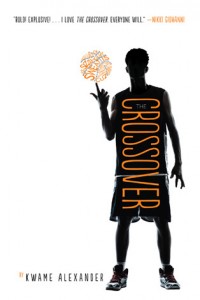 about the characters in a fictional story. I only read the first page and a half in my lesson, and after the class period there was a line outside the library trying to get a copy of the book (see more). Another fool-proof way to get students interested in reading is to discuss the books with them. Even read the same book. It seems simple enough, and it is. I recently had the opportunity to work with a middle school student who was a self-proclaimed non reader. I told him that was okay and that, at his age, I was too. We talked about things he liked, which happened to be basketball. He discussed all his game winning moves and was excited that I was just letting him talk about that. Little did he know I was planning my “reading teacher attack.” I went home and searched for something that would have high interest and low reading level, but appeal to him as a basketball player. I found it on Good Reads. The Crossover by Kwame Alexander is a novel told in verse about a boy who lives and breathes basketball. While basketball is at the forefront, the book has many more deeper themes and quite a bit of plot development. I brought the student the book. At first he scowled as I handed him the book and he reminded me that he doesn’t read. I said, that’s okay this story is told in rap. He glanced at the book. I told him that I hadn’t read it yet, but was waiting for the perfect time. I asked if we could read it at the same time, that way he could help me with the basketball terminology (I had already marked three words that were basketball words I could point out to him). He smirked, probably well aware of my plan. But he seemed to enjoy discussing basketball with me. We both began reading and he enjoyed sharing the book with me. We had quick discussions now and then about the main character and how he was acting. The student was constantly connecting himself to the character and thinking rather deeply about the relationships the main character had. WIN! Not only did the student complete the story, he enjoyed the story, discussed characterization and plot development and it was a novel in VERSE! Other students who had listened to parts of our conversation now wanted to read the book as well.
about the characters in a fictional story. I only read the first page and a half in my lesson, and after the class period there was a line outside the library trying to get a copy of the book (see more). Another fool-proof way to get students interested in reading is to discuss the books with them. Even read the same book. It seems simple enough, and it is. I recently had the opportunity to work with a middle school student who was a self-proclaimed non reader. I told him that was okay and that, at his age, I was too. We talked about things he liked, which happened to be basketball. He discussed all his game winning moves and was excited that I was just letting him talk about that. Little did he know I was planning my “reading teacher attack.” I went home and searched for something that would have high interest and low reading level, but appeal to him as a basketball player. I found it on Good Reads. The Crossover by Kwame Alexander is a novel told in verse about a boy who lives and breathes basketball. While basketball is at the forefront, the book has many more deeper themes and quite a bit of plot development. I brought the student the book. At first he scowled as I handed him the book and he reminded me that he doesn’t read. I said, that’s okay this story is told in rap. He glanced at the book. I told him that I hadn’t read it yet, but was waiting for the perfect time. I asked if we could read it at the same time, that way he could help me with the basketball terminology (I had already marked three words that were basketball words I could point out to him). He smirked, probably well aware of my plan. But he seemed to enjoy discussing basketball with me. We both began reading and he enjoyed sharing the book with me. We had quick discussions now and then about the main character and how he was acting. The student was constantly connecting himself to the character and thinking rather deeply about the relationships the main character had. WIN! Not only did the student complete the story, he enjoyed the story, discussed characterization and plot development and it was a novel in VERSE! Other students who had listened to parts of our conversation now wanted to read the book as well.
Overall, the bottom line is that we want kids reading. Yes, we want them to read many different types of things at varying levels, but truly we just want them to read. Gently nudge your growing readers to try new authors, talk to them about what they’re reading, and give them choice in what they read!
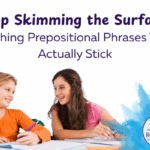

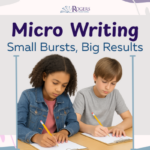
I will definitely be finding Treasure Hunters for my middle child, as well. He is into the same genre books when I make him read….yes, MAKE him. I’m hoping I have the same successes with drawing him into the book as your Cole was! And really, with James Patterson, can it really be a failure? 🙂
I bet he will love it as well. Please let me know how it works, I might have other suggestions by then!
You always have the BEST books to show us! I have bought so many books based only on your recommendations, and they have always been wonderful! I can’t wait to check these out!